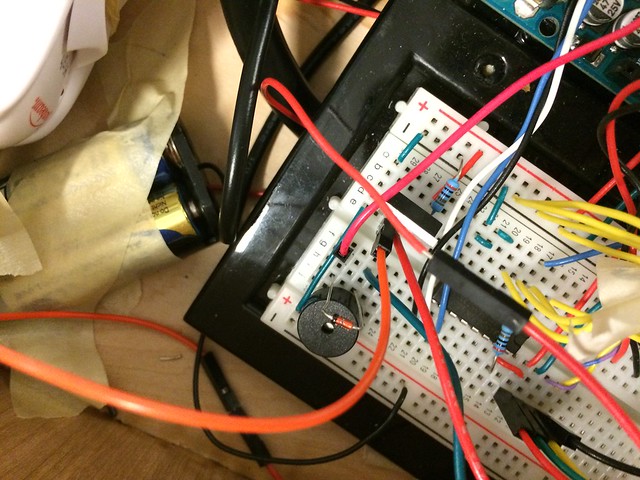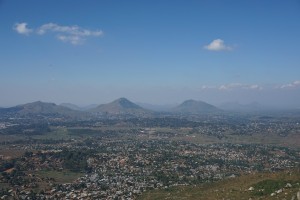When I fly to Blantyre, Malawi this Saturday, I will carry with me many things. Emily, Catherine and I have spent the past three weeks working to determine, prepare, and pack all that we anticipate needing for our internship this summer at the Polytechnic University of Malawi (“the Poly”). To help explain what we have been up to and what we will be doing for the next ten weeks, I have made a list of a few things we will carry with us:
- Suitcases. We will each tote two very stuffed suitcases—one filled with materials for the internship, the other filled with personal items—that have been strategically packed to almost exactly 50.0lbs each (trying to avoid those overweight baggage fees). Here are a few things filling the internship suitcases:
- Over a hundred electrical components. One of our goals during the internship is to develop new health technologies for use in low resource settings. We will be working on teams with Malawian students, combining each of our strengths to hopefully begin solving some of the healthcare challenges we observe around us. However, we don’t know exactly what projects we will be working on, nor what materials are available, nor what resources are needed. Emily, Catherine, and I—the Poly interns—have spent a good chunk of time creating and ordering a grand list of basic prototyping materials to help enable the innovation of new technologies over the next two months.
- Funnels and bike pumps. There are a few projects already in the works at the Poly, though prototyping has been made difficult by the lack of available materials. While we had the luxury of access to abundant resources in Houston, we ordered dozens of parts that we predicted and heard were needed to further these existing Poly design projects. Some of these projects include a phototherapy dosing meter, a mechanical breast pump (this is where the funnels and bike pumps come in), and an automated blood pressure sensor.
- Bouncy balls, pool noodles, and extra-long pipe cleaners. Two Rice faculty members will be traveling to Blantyre for a week during the summer to teach a design workshop to the Poly faculty. Part of our responsibility as interns will be to assist with this workshop, which includes hauling over a ton of materials beforehand. Additionally, we have a list of a few dozen materials to buy in Malawi, which we look forward to using as a means to explore the city!
- New technologies. For me, one of the most inspiring experiences thus far in my entire education has been the opportunity to help create relevant and needed healthcare technologies. There is great potential for these technologies to really have a positive impact, however a barrier to their long-term success is technology adoption; if a doctor or a nurse doesn’t like the device, there is a high probability it won’t be used, no matter how well it works. An important step in the development of new technologies is initial feedback, which is where the interns come in. All of the interns have spent time the past three weeks prototyping around nine new technologies, most of which have been developed this past year by students in the global health program. I’m particularly excited to hear feedback on the bCPAP heating sleeve, which is the product of my team’s labor from this past semester in Global Health Technologies 360: Appropriate Design for Global Health. All of the interns learn how to describe and answer questions about each new tech so that we can present these developing devices to healthcare workers in Malawi and get their feedback about what they do—and don’t—like. It’s one of the ways that we, working as students in Houston, have a chance to develop technologies that are needed and liked by healthcare workers in Malawi.
- Laptops. The fourth, unofficial member of our internship team is Google Drive. In addition to gathering physical materials before departing, we’ve been having meetings with Rice faculty to gather information to help with one of our biggest tasks this internship: designing and implementing an engineering orientation week for incoming engineering students at the Poly. This project will be ongoing throughout the internship, culminating in our final week when we actually execute this orientation week. In order to prepare ourselves to create this event, we spent time meeting with Rice’s engineering faculty, the director of the engineering leadership program, students and faculty involved in Rice’s freshman orientation week, and professors who teach the engineering design process. We know that our conception of this orientation week will change as we spend more time in Malawi with the Poly students and faculty, however we have gathered many ideas, materials, and insights in hopes that they can be tailored to help create a novel engineering orientation week at the Poly.
- Chichewa flashcards. We’ve been given an incredible learning opportunity to go to Malawi and live and work in the context for which we are designing health technologies. We will have the chance to get to know the nurses and doctors who use the technologies, the engineers who fix them when they break, the students who will design many future technologies, the professors who guide these students, and the mothers whose infants are treated with the technologies. In order to best form these relationships, we thought it would be a good idea to try and learn words and phrases in one of the major languages of Malawi, Chichewa. Even though my accent and pronunciation right now is awful, hopefully it will help to at least try!
- A healthy dose of excitement (and nerves). At the beginning of anything new, I always feel a nervous, eager anticipation. I feel this especially now, as what is coming is something I regard as very important, but is also very unknown. This opportunity will afford me the chance to learn and contribute things I wouldn’t otherwise be able to. It is a chance I am humbled and grateful to have, and I hope to somehow live up to the potential it has created. We have done our best to prepare, filling up flashcards, suitcases, and Google Drive folders, but it is impossible to really know what is going to come next. My role and perceptions will shift throughout the next ten weeks, and the projects I will be working on will most likely take a shape vastly different from the one I have created so far in my head. I don’t know in what final form the funnels, the pool noodles, or the (currently) poorly-pronounced Chichewa words will be used, but I do know that a passion for the work will hold steady, if not grow stronger. Acknowledging the unknown and growing comfortable with the probability of continuous change will hopefully best enable me to progress through this internship open minded, open to recognizing present needs and meeting them as opposed to imposing any other agenda, and open to new lessons, new work, and new ideas.



